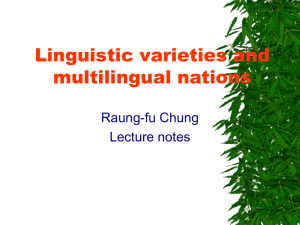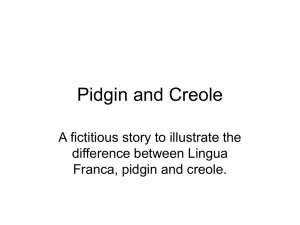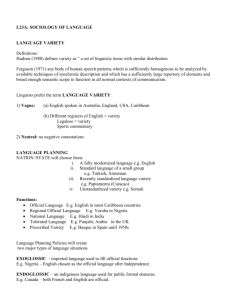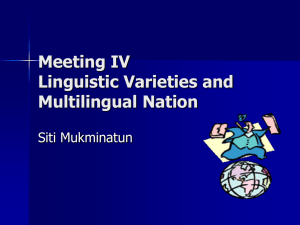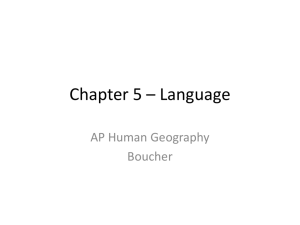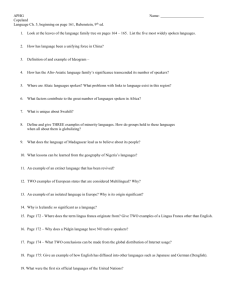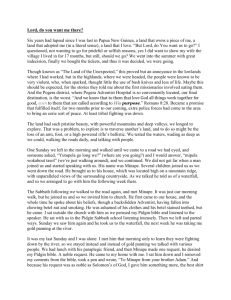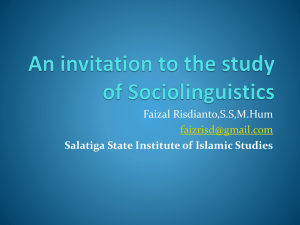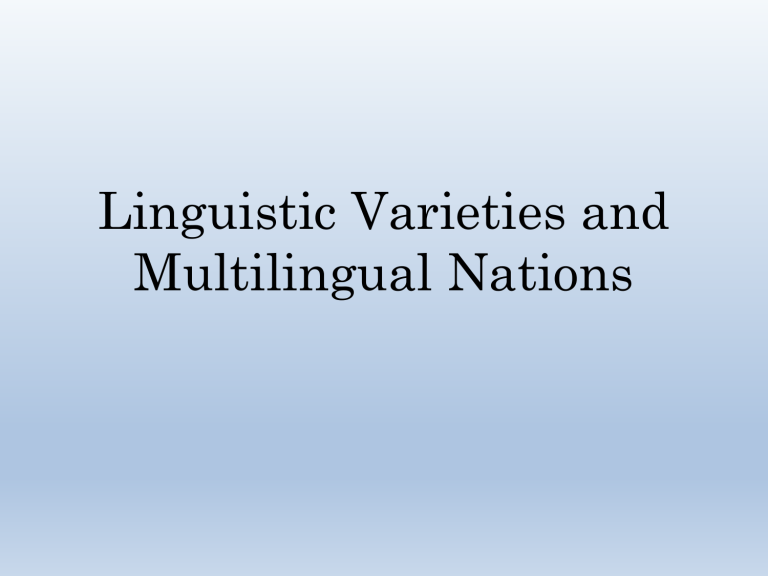
Linguistic Varieties and Multilingual Nations Over half the world’s population is bilingual and many people are multilingual. They acquire a number of languages because they need them for different purpose in their everyday interaction Vernacular Languages Standard Languages World Englishes Lingua Franca Pidgin Creoles It generally refers to a language which has not been standardized and which does not have official status. Vernacular are usually the first language learned by people in multilingual language communities, and they are often used for a relatively narrow range of informal functions. Example : like a children are talking with their friends used informal language from his places. That is the Vernacular language that they use. Components of Vernacular Languages ▪ A vernacular is an uncodified or unstandardized. ▪ It refers to the most colloquial variety in the person's linguistic repertoire. ▪ It is used to indicate that a language is used in informal everyday interactions without implying that it is appropriate. Recognized as a prestigious variety or code by a community. Generally is written, and has undergone some degree of regularization or codification. Standard language is most useful and widely used as an official language or the national language. Example: Human in their places use standard language in their places. Like Indonesia, we used Bahasa Indonesia as Standard Languages. A language used for communication between different language users, for people whose first languages differ. Example: ▪ Academics and experts meet at international conferences or when politicians arrange summit meetings; English, French, or Spanish is often used as a lingua franca. ▪ Like in Bali, many people want to talk with other people use Balinese language. In some countries the most useful and widely used lingua franca is an official language or the national language. e.g. 1. Swahili in Tanzania 2. Tok Pisin in Papua New Guinea 3. Russian among a hundred different vernaculars Example of Tok Pisin Tok Pisin Bik Brait Daun Nogut Pret doti English Tok Pisin English Big-large Wide Low Bad Afraid dirty Bikim Braitim Daunim Nogutim Pretim Dotim To enlarge, make larger To make wide, widen To lower To spoil, damage To frighten, scare Pidgin is a language that has no native speakers. Pidgins evolved as a means of communication between people who do not have the same language. It grows up among people who do not share a common language but who want to communicate with each other Example: Like People from Saparua talk with someone from Aboru in the street their pronunciation will be different. Why Pidgin developed? Pidgins develop as a means of communication between people who do not have a common language. What kind of linguistic structure does a pidgin language have? Pidgin languages are created from the combined efforts of people who speak different languages. All languages involved may contribute to the sounds, the vocabulary, and the grammatical. Attitudes Pidgin languages do not have high status or prestige 1. It is used in limited domains and functions 2. It has a simpler structure than the source language 3. It generally has a low prestige and attract negative attitude especially from outside A Creole is when a pidgin language is adopted by a community as its native tongue and children learn it as first language. According to the Cambridge Encyclopedia of Language, a Creole is “a pidgin which has become the mother tongue of a community,” and therefore has native speakers. Creole also means that a language that begins as a pidgin and eventually becomes a first language of a speech community through being learned by children. Example: Bahasa Melayu was adopted as Bahasa Persatuan (unifying language) called Bahasa Indonesia. After being adopted as Indonesian community, it has been learnt by Indonesian people as native language. At present, there are native speakers of the language.
